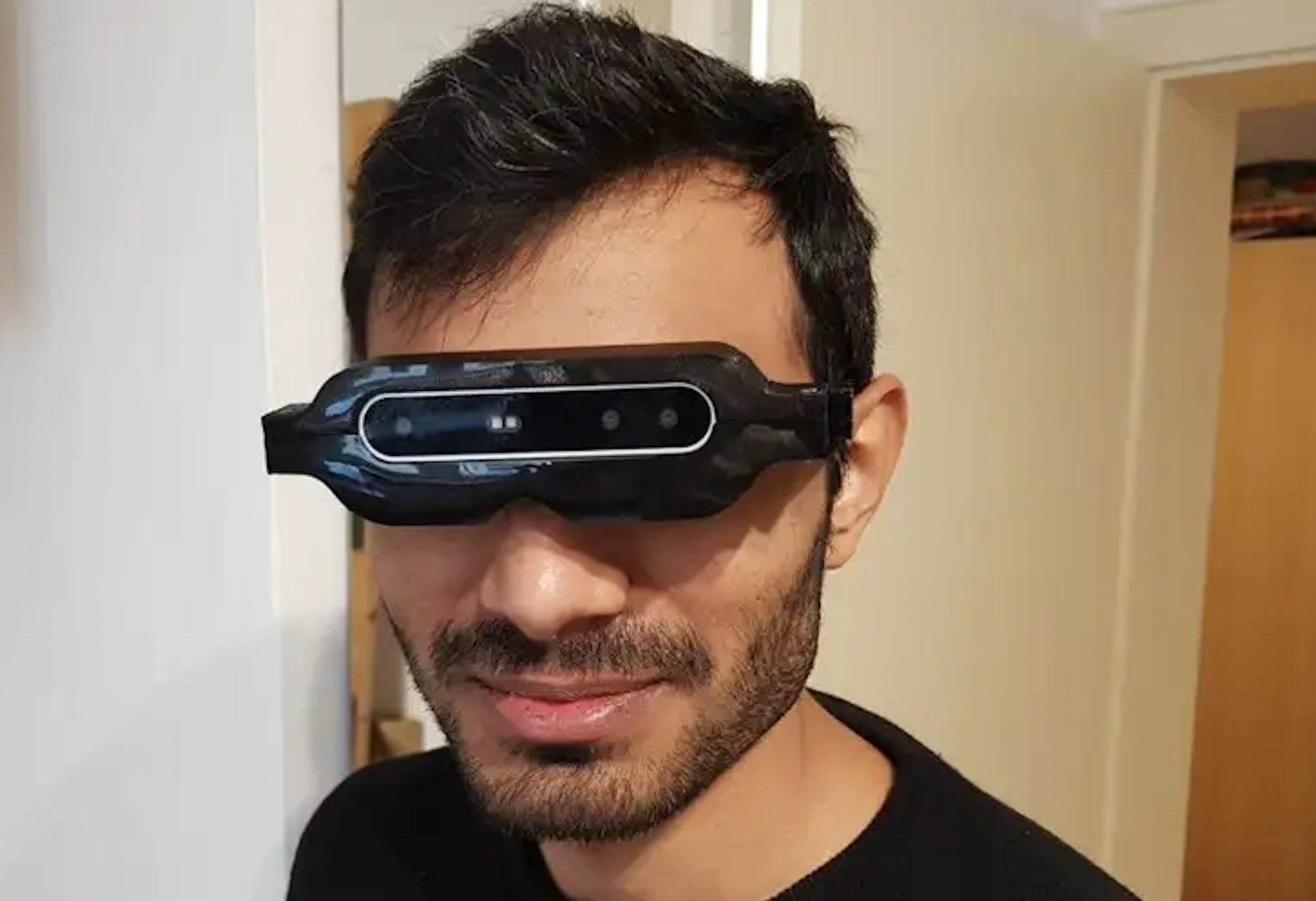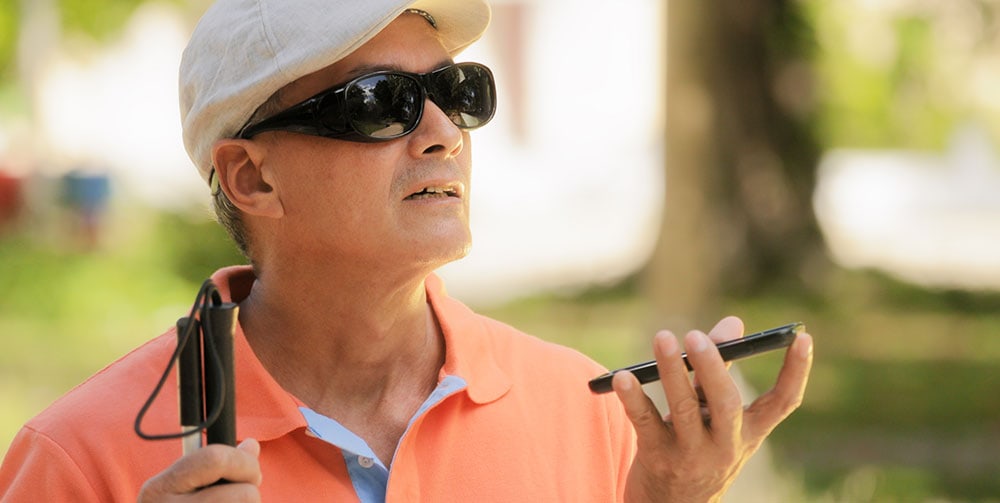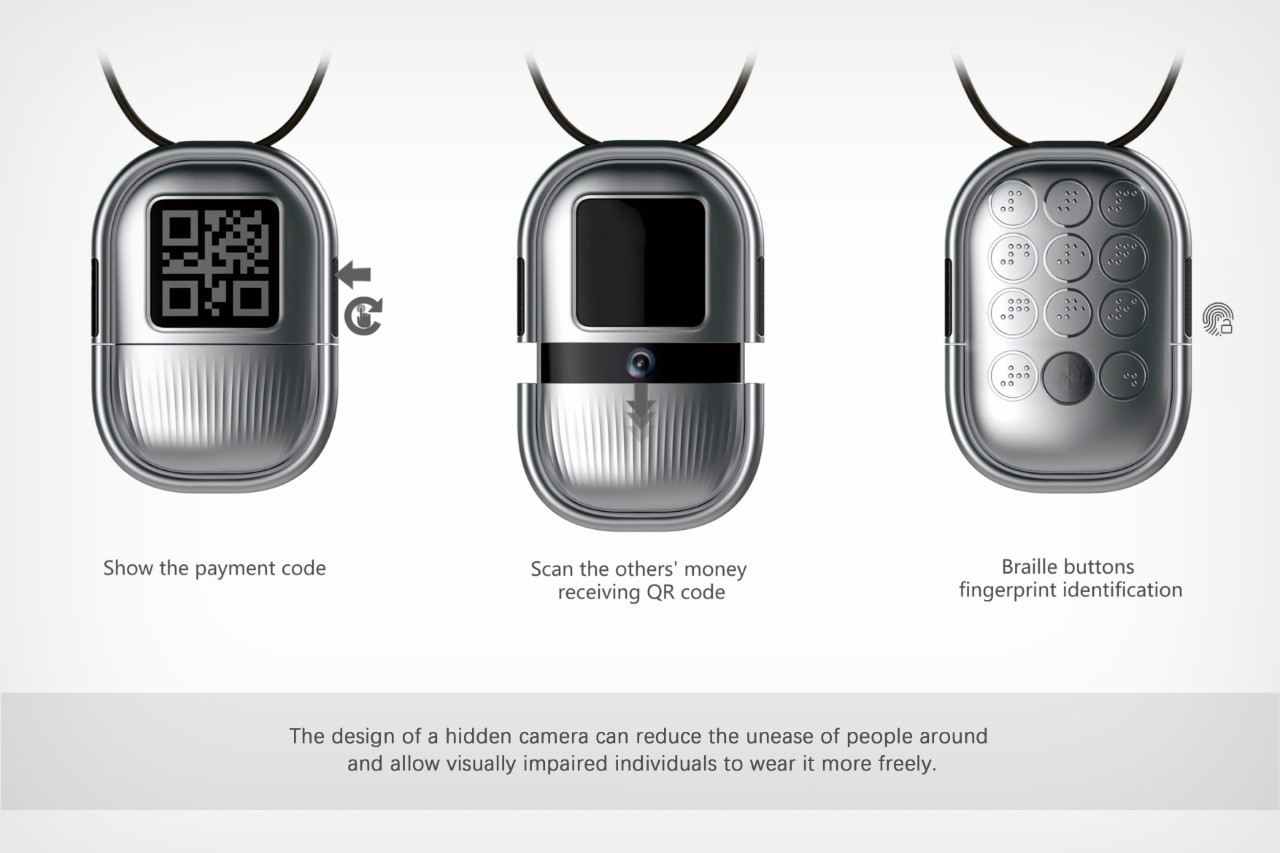Speech-to-Text Devices for Low Vision: Closing the Communication Gap
Wiki Article
Discover Cutting-edge Devices Created for the Aesthetically Damaged
The development of ingenious devices for the aesthetically damaged stands for a significant development in accessibility and independence. Technologies such as clever glasses with AI abilities and mobile applications designed to supply acoustic descriptions are improving everyday experiences for individuals.Smart Glasses for Navigating

Smart glasses made for navigating are reinventing the way aesthetically damaged individuals interact with their setting. These sophisticated tools make use of a mix of electronic camera innovation, expert system, and auditory comments to offer real-time information concerning surroundings. By using barrier discovery systems, wise glasses can signal customers to possible risks, allowing safer mobility in both strange and familiar setups.
The integration of GPS modern technology even more enhances navigating abilities, permitting users to receive acoustic directions as they relocate. This hands-free method not only promotes independence but likewise equips aesthetically impaired individuals to navigate city landscapes with raised confidence. Additionally, many clever glasses are outfitted with attributes that recognize landmarks and street signs, offering contextual info that improves the customer experience.
Additionally, the advancement of these tools is continuously advancing, with firms working to boost the accuracy of item recognition and expand the array of navigational functions. As clever glasses become extra budget-friendly and accessible, they hold the prospective to considerably transform day-to-day live for visually damaged users. Inevitably, these ingenious devices represent a vital action toward inclusivity, offering boosted mobility and a better sense of freedom for individuals browsing the world around them.

Mobile Apps for Daily Living
Exactly how can mobile applications boost the lives of aesthetically impaired individuals? Mobile apps are changing the method visually damaged users browse their settings, manage everyday tasks, and accessibility details. These applications offer crucial support with numerous capabilities, fostering self-reliance and enhancing top quality of life.Numerous innovative mobile apps are developed particularly for day-to-day living. For example, apps like Be My Eyes connect visually impaired users with sighted volunteers through video phone calls, permitting them to obtain real-time aid with jobs such as reading tags or browsing strange rooms. Seeing AI, created by Microsoft, uses synthetic intelligence to describe environments, checked out text, and determine objects, successfully changing a smart device into an effective device for daily help.
In addition, navigating applications customized for the aesthetically damaged, such as Aira and BlindSquare, provide audio-based instructions and ecological information, allowing customers to traverse their environments securely and confidently. Past navigation and prompt support, mobile applications likewise support company and job management, with functions that assist individuals set pointers, develop to-do checklists, and track appointments. In summary, mobile applications function as crucial resources, empowering aesthetically impaired people to lead more independent and fulfilling lives.
Wearable Technologies for Help
Empowerment through innovation is progressively apparent in the world of wearable tools created to assist visually damaged individuals. These innovative devices integrate seamlessly right into every day life, enhancing navigation and giving crucial comments to individuals. Clever glasses outfitted with electronic cameras can check out and recognize faces message out loud, permitting individuals to communicate even more confidently in professional and social setups.An additional notable advancement is making use of haptic comments systems in wearable tools. These systems utilize vibrations or various other tactile signals to share details concerning the customer's environment, such as barriers or changes in surface, boosting movement and safety and security. Wearable technologies also include wristbands that attach to smart devices, alerting individuals to alerts through refined vibrations, therefore improving connection without dependence on aesthetic hints.
As these innovations remain to develop, they click here for more info are not only enhancing independence for visually damaged people yet additionally promoting a higher sense of addition in society. By bridging the space between obstacles encountered in day-to-day living and the capacity for autonomy, wearable modern technologies act as critical tools in the pursuit for equality and empowerment for those with aesthetic impairments.
Sound Description Tools
Sound summary tools play a critical duty in improving accessibility for aesthetically impaired people, supplying them with the capacity to engage with visual media. Screen readers for the blind. These tools offer narrated descriptions of essential visual aspects in movies, tv shows, and live performances, guaranteeing that users can totally comprehend the context and emotions communicated via visualsSound summary can be integrated into various platforms, including streaming services, movie theater screenings, and live theater. Many preferred streaming services currently include audio summary as an ease of access function, allowing viewers to choose it easily. Along with traditional media, specialized applications likewise exist, giving audio summaries for art events, galleries, and various other cultural events.
The efficiency of audio description depends upon the ability of the narrators, that should communicate visual information succinctly without diminishing the initial sound. Developments in this area are likewise leading the way for more individualized experiences, where customers can change the level of information and pacing according to their choices.
Braille Innovations and Tools
Braille devices and technologies have dramatically changed the means aesthetically damaged people interact with text and information. Modern innovations have caused the development of flexible devices that enhance literacy and self-reliance among individuals. Especially, Braille present modern technologies have actually progressed, enabling dynamic reading experiences. These tools convert electronic message into Braille, making it possible for users to access a substantial array of details on mobile phones, computer systems, and tablet computers.
Furthermore, portable Braille notetakers combine typical Braille input with contemporary functionalities, promoting note-taking, scheduling, and file editing and enhancing on the move. Voice-activated assistive devices. These compact devices frequently feature read what he said text-to-speech abilities, linking the void between Braille and acoustic details
On top of that, cutting-edge Braille printers have actually arised, permitting users to generate Braille labels, papers, and instructional products efficiently. This availability cultivates greater engagement in expert and academic atmospheres, eventually promoting inclusivity.
Additionally, research right into smart Braille innovations proceeds to broaden. Tools that include expert system are being explored to offer real-time navigation aid and contextual details, boosting the customer experience in diverse setups. On the whole, these innovations show a commitment to equipping aesthetically damaged individuals through this contact form modern technology, ensuring they can easily gain access to and involve with the globe around them.

Verdict
The advancement of innovative tools for the aesthetically damaged dramatically improves freedom and top quality of life. These innovations not just foster greater inclusion but likewise advertise freedom in everyday tasks, ultimately contributing to a more equitable and accessible culture for aesthetically damaged individuals.As smart glasses become much more obtainable and inexpensive, they hold the potential to significantly transform daily life for visually impaired individuals. Mobile applications are changing the means visually impaired users navigate their settings, take care of day-to-day jobs, and access information. Applications like Be My Eyes attach visually impaired customers with sighted volunteers using video phone calls, enabling them to receive real-time support with jobs such as checking out labels or browsing unknown spaces.Additionally, navigating applications customized for the visually impaired, such as Aira and BlindSquare, supply audio-based directions and environmental details, enabling individuals to traverse their surroundings safely and with confidence.The advancement of cutting-edge tools for the visually impaired significantly boosts self-reliance and high quality of life.
Report this wiki page